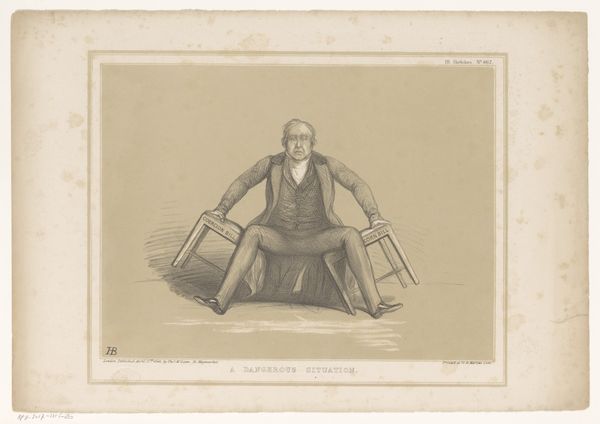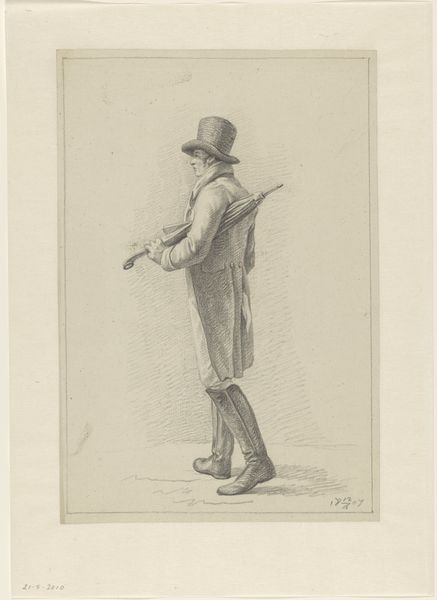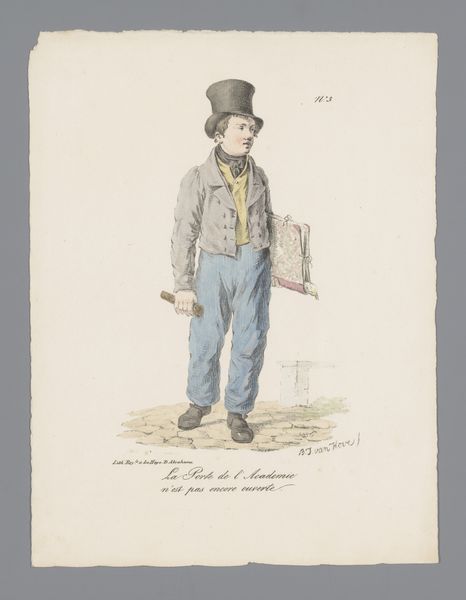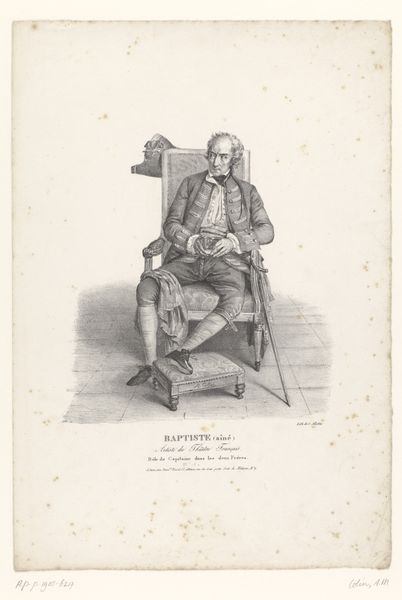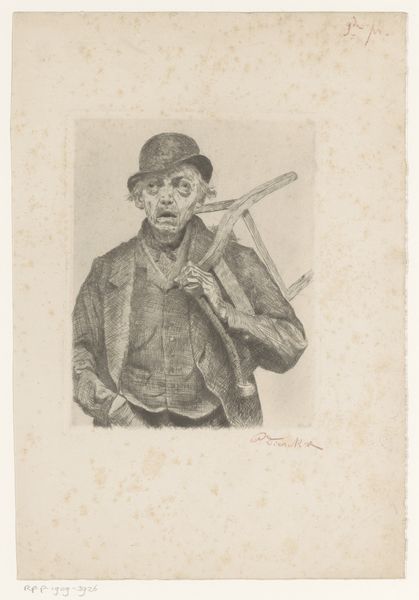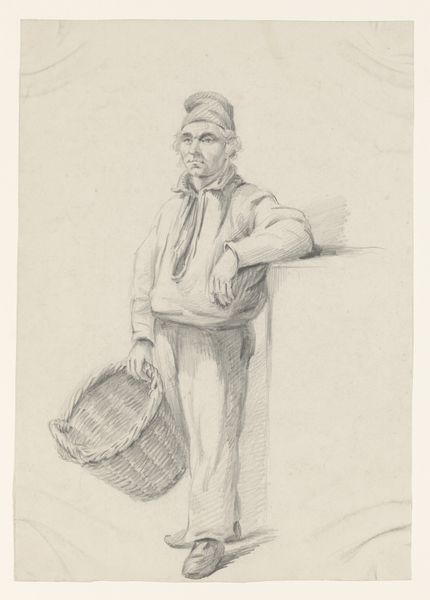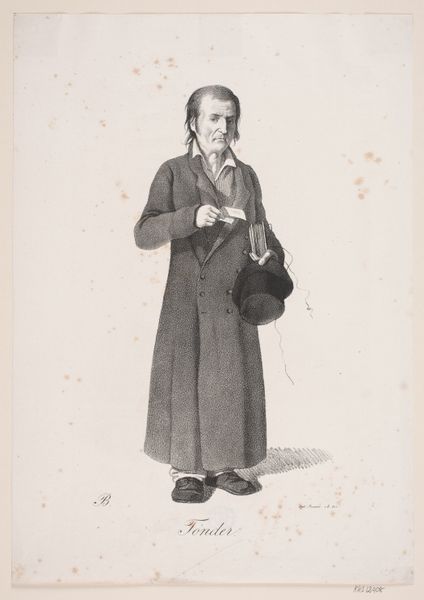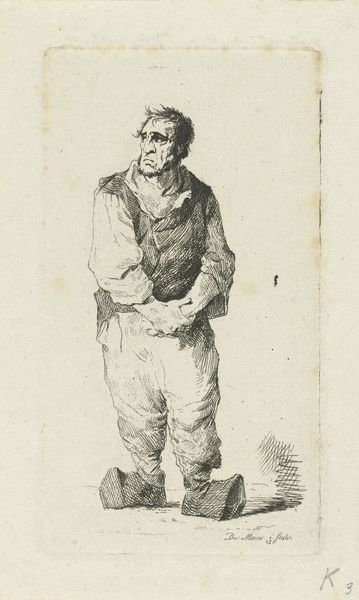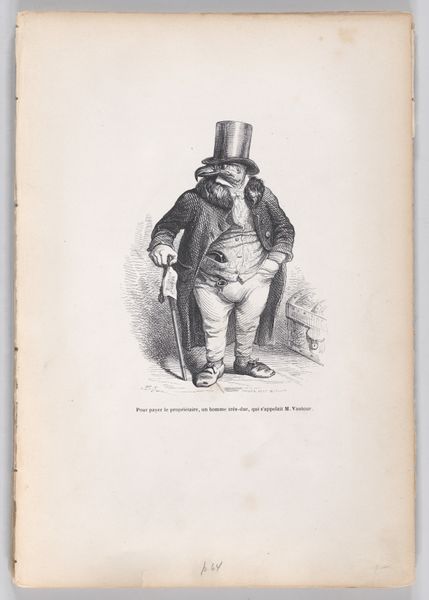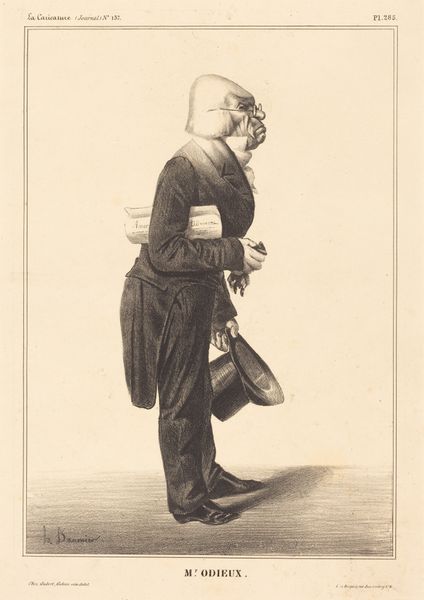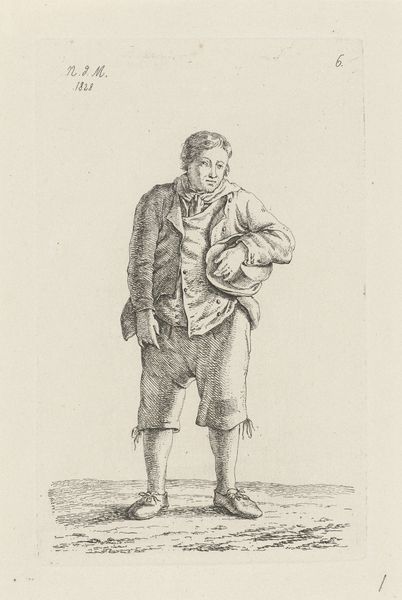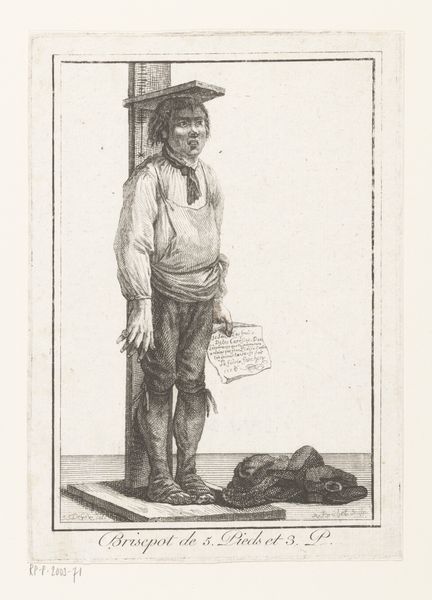
lithograph, print
#
portrait
#
lithograph
# print
#
genre-painting
#
realism
Dimensions: 376 mm (height) x 267 mm (width) (bladmaal)
Editor: So, here we have Asmus Kaufmann's lithograph print, A. Dich, made sometime between 1820 and 1843. It shows a man holding what looks like tools – a shovel and a basket. He looks like he’s just stepped out of his daily life. What do you see in this piece, looking at it from a broader historical and social context? Curator: I see a powerful depiction of the working class in the 19th century, but more than just a depiction. This piece encourages us to examine the realities of labor and social identity. Consider the era: post-French Revolution, yet social inequalities persist. How does the artist frame this man, not as some romanticized peasant, but as an individual defined by his work? Editor: That’s interesting. I hadn't considered how deliberate that choice might have been. I suppose I just saw a man going about his day. Curator: Exactly! And it’s in that "ordinary" portrayal that we find a quiet but potent social commentary. Kaufmann isn't just showing us a man; he's presenting the value of his labor. This speaks volumes about the societal structures and how the working class was beginning to be seen and to see themselves. What statement does portraying a labourer in an art piece make? Editor: So, it challenges the traditional hierarchies often seen in art, perhaps? By centering this individual, it's giving worth to an identity typically overlooked. Curator: Precisely! It asks us to consider how identity, gender, race, and class intersect in this specific historical moment. By appreciating this, you may not only connect to history but also contemplate how we perceive these topics today. Editor: That gives me a lot to think about. Thank you. I’ll be looking at art differently now. Curator: My pleasure! Art is at its best when it compels such a reevaluation, helping us rethink established assumptions, and relate to shared experience throughout time.
Comments
No comments
Be the first to comment and join the conversation on the ultimate creative platform.
